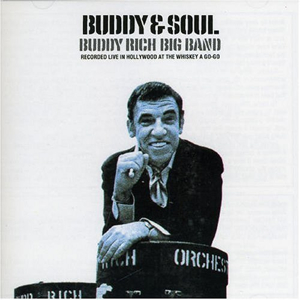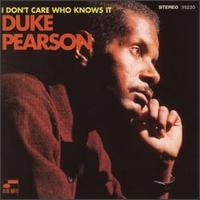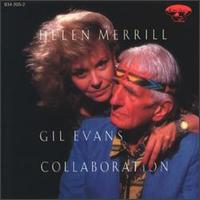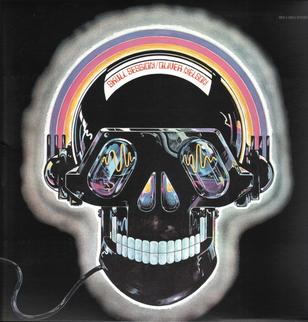
Mel Tormé, Rob McConnell and the Boss Brass is a 1986 studio album by Mel Tormé, accompanied by Rob McConnell's Boss Brass Big band. Tormé and McConnell's follow up album, Velvet & Brass was released in 1995.

Electric Byrd is a jazz fusion album by Donald Byrd released by the Blue Note label in 1970.

Suite for Pops is a 1975 big band jazz album recorded by the Thad Jones/Mel Lewis Jazz Orchestra and released on the A&M Horizon label.

Cumbia & Jazz Fusion is an album by Charles Mingus, recorded for the Atlantic label in 1977. It features two extended compositions written for the film Todo Modo by Mingus and performed by large ensembles featuring Jack Walrath, Jimmy Knepper, Paul Jeffrey, Ricky Ford, Dannie Richmond, Candido, Ray Mantilla, George Adams and Danny Mixon. The CD reissue added two solo performances by Mingus on piano.

So What is a live album by George Russell released on the Blue Note label in 1987, featuring performances by Russell with his Living Time Orchestra recorded in 1983 in Boston. The Allmusic review by Richard S. Ginell awarded the album 3 stars and states "These tracks were recorded at the same Boston church concert that yielded The African Game, and Russell's Living Time Orchestra responds with the same kick and enthusiasm, although the musicians' individual solo turns aren't terribly startling... further evidence of Russell's (mixed?) desire to come to terms with the idioms of his time".

Buddy & Soul is a 1969 live album by the Buddy Rich Big Band, recorded at the Whisky a Go Go club in West Hollywood, California.

I Don't Care Who Knows It is an album by American pianist and arranger Duke Pearson featuring performances recorded between 1968 and 1970. The album was released on the Blue Note label in 1996.

Maestro is an album by Brazilian composer Moacir Santos recorded in 1972 and released on the Blue Note label.

Saudade is an album by Brazilian composer Moacir Santos recorded in 1974 and released on the Blue Note label.

Circling In is a double LP collection by jazz pianist Chick Corea featuring performances recorded between 1968 and 1970, including the first recordings by the group Circle, which was first released on the Blue Note label in 1975. It contains trio performances by Corea with Miroslav Vitouš and Roy Haynes recorded in March 1968, which were later added to the CD reissue of Now He Sings, Now He Sobs as bonus tracks, and performances by permutations of the band Circle recorded in April and July 1970 some of which were later released as Early Circle.

Sound Pieces is an album by American jazz composer, conductor and arranger Oliver Nelson featuring performances recorded in 1966 for the Impulse! label.

Collaboration is a 1987 studio album by Helen Merrill, arranged by Gil Evans. With the almost identical repertoire of recorded songs –though in another order– and following Evans' original scores it is a celebratory re-recording of their previous collaboration from 30 years ago for Merrill's album Dream of You, released in 1957 also on EmArcy. The one exception is the opener, "Summertime" from Porgy and Bess, that Evans recorded with Miles Davis in 1958, it replaces "You're Lucky to Me". Like Dream of YouCollaboration was recorded on three consecutive recording sessions each with a different line-up, one with woodwinds and trombone for most songs, featuring soprano saxophonist Steve Lacy on two tracks, one session with brass and another with a string section and woodwind.

Mosaic Select 16: Andrew Hill is a compilation album by American pianist Andrew Hill. Except for six tracks, issued on One for One in 1975, it features previously unreleased pieces originally recorded for Blue Note Records.

Both Feet on the Ground is an album by guitarist Kenny Burrell recorded in 1973 and released on the Fantasy Records label.

The Gil Evans Orchestra Plays the Music of Jimi Hendrix is an album of Jimi Hendrix's compositions by jazz composer, conductor and pianist Gil Evans. The music was arranged by Evans and members of his orchestra. The album was recorded in 1974 and performed by Evans with an orchestra featuring David Sanborn, Howard Johnson, Billy Harper, and John Abercrombie. The album was re-released with additional tracks on CD in 1988.

The New Don Ellis Band Goes Underground is an album by trumpeter/bandleader Don Ellis recorded in 1969 and released on the Columbia label.

Our Mann Flute is an album by American jazz flautist Herbie Mann released on the Atlantic label in 1966. The album features tracks from sessions that produced the albums The Common Ground (1960), My Kinda Groove (1964) along with more recent recordings.

The Sound of Feeling is a jazz album featuring two separate groups featuring Oliver Nelson recorded in late 1966 and released on the Verve label. The split album begins with five tracks by the Los Angeles based group The Sound of Feeling, featuring identical twin vocalists Alyce and Rhae Andrece and pianist Gary David with the addition of soloist Nelson. Four tracks are by the Encyclopedia of Jazz All Stars, a big band drawn from the ranks of top New York studio musicians, arranged and conducted by Nelson which were recorded to accompany Leonard Feather's Encyclopedia of Jazz in the Sixties.

Skull Session is an album by American jazz composer/arranger Oliver Nelson featuring performances recorded in 1975 for the Flying Dutchman label.

Origin Suite is the second jazz album by Michael Waldrop, produced by award-winning Seattle, Washington-based label Origin Records and released January 3, 2018. The CD idea is a high level, eclectic mix of works showcasing Michael Waldrop. Specifically, the Origin Suite was composed for this CD as a tour de force to showcase Waldrop. Most notably the CD received 4 of 5 stars by music critic and author Brian Morton in the April 2018 edition of Jazz Journal from London.




















